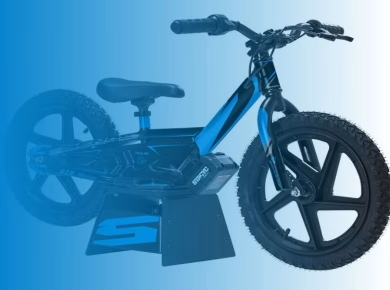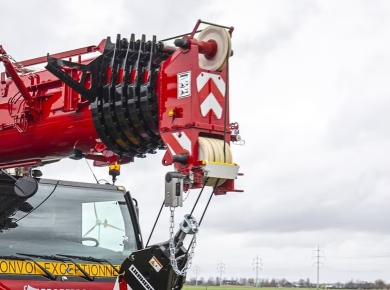If you’re considering visiting a Honda dealership, you’ve probably encountered the frustration of navigating the intricacies of car buying—like when you walk in excited, only to feel overwhelmed by sales tactics and endless choices. After assisting countless clients in finding their perfect Honda, here’s what you should know to ensure a smooth experience and make the most out of your dealership visit.
Honda Experience
Honda dealerships are known for their customer-centric approach, but that doesn’t mean every experience is the same. Each dealership may have its unique vibe, sales strategies, and inventory. It’s crucial to understand what to expect when you step onto the lot. A little knowledge can save you time and potentially hundreds of dollars.
The Importance of Research
Before you even set foot in a dealership, do your homework. Use resources like Honda’s official website to familiarize yourself with the different models, trims, and features available. For example, if you’re interested in the Honda CR-V, know whether you want the base model or a higher trim with additional features like all-wheel drive and advanced safety technologies.
Here’s exactly how to prepare:
- Identify Your Needs: Consider what you’ll use the vehicle for—commuting, family trips, or hauling equipment.
- Set a Budget: Determine how much you can afford, including monthly payments, insurance, and maintenance costs.
- Check Vehicle Availability: Look online for stock at your local dealership to ensure they have the model you want to test drive.
Timing Your Visit
Timing can significantly affect your dealership experience. Visiting during off-peak hours—like weekday mornings—can lead to more personalized attention from sales staff. Avoiding weekends, when dealerships are typically crowded, can give you the opportunity to ask more questions and engage in a thorough test drive without feeling rushed.
Seasonal Promotions and Incentives
Dealerships often run promotions at the end of the month or during holiday sales events. These times can be excellent opportunities to secure better deals. For instance, Honda frequently offers financing deals or cash-back incentives towards the end of the calendar year to clear out inventory. Understanding these cycles can put you in a better negotiating position.
Engaging with Sales Representatives
When you arrive, you’ll likely be greeted by a sales representative. It’s essential to establish a rapport, but remain vigilant about their tactics. Many salespeople are trained to upsell or push add-ons that may not fit your budget or needs.
Asking the Right Questions
Instead of passively receiving information, come prepared with specific questions. Here are some effective ones:
- What are the differences between the models I’m interested in?
- Can you explain the warranty and maintenance packages?
- Are there any current promotions or rebates available?
Now, here’s where most buyers get it wrong: they focus solely on the sticker price without considering the total cost of ownership, including insurance, taxes, and maintenance. Make sure you ask for a breakdown of all potential costs associated with your purchase.
Test Driving Like a Pro
Test driving is one of the most crucial steps in your dealership experience. It’s your chance to see how a vehicle performs in real-world conditions. Don’t just circle the block; take the time to assess the car thoroughly.
Key Aspects to Evaluate During a Test Drive
When you’re behind the wheel, focus on these elements:
- Comfort: Is the seating supportive? Do you have enough legroom?
- Visibility: How does it feel to drive? Can you see well out of the windows?
- Technology: Test all infotainment features, including navigation and Bluetooth connectivity.
Remember, this is your opportunity to assess if the vehicle fits your lifestyle. For instance, if you have a family, consider how easy it is to secure a child seat or how much cargo space is available. Take your time—don’t rush through this process.
Navigating the Negotiation Process
Once you’ve settled on a vehicle, it’s time to negotiate. This is often where buyers feel the most anxiety, but keeping a few strategies in mind can empower you.
Preparation for Negotiation
Before you start, know the market value of the vehicle you want. Websites like Kelley Blue Book or Edmunds can provide insights into fair pricing based on local sales data. Here’s how to approach the negotiation:
- Start Low: Begin your offer lower than you’re willing to pay to give yourself room for negotiation.
- Be Prepared to Walk Away: If the deal isn’t working for you, don’t hesitate to leave. This can often bring the salesperson back with a better offer.
- Discuss Financing Separately: Negotiate the price of the vehicle before discussing financing options. This helps avoid confusion and potential pitfalls.
Understanding Financing Options
Financing can significantly impact your overall cost, so it’s essential to understand your options. Most dealerships offer financing through banks or credit unions, but you might find better rates elsewhere.
Evaluating Loan Terms and Rates
When considering financing, pay attention to the Annual Percentage Rate (APR) and the loan term. A longer loan term may lower your monthly payments but could increase the total interest paid over time. Here’s a quick checklist for evaluating financing:
- Compare rates from multiple lenders.
- Understand the total cost of the loan (principal + interest).
- Look for any hidden fees or penalties for early repayment.
Finalizing Your Purchase
Once you agree on the price and financing, it’s time to finalize your purchase. This step can sometimes feel overwhelming, with paperwork and additional offers presented to you.
What to Review Before Signing
Before signing any documents, ensure you review the following:
- Purchase Agreement: Check that the terms match what you agreed upon verbally.
- Warranty Information: Understand what is covered and for how long.
- Add-Ons: Be cautious of any add-ons like paint protection or extended warranties—these can often be purchased later at a lower cost.
We learned this the hard way when a client signed without fully understanding their warranty, leading to unexpected out-of-pocket expenses later. Take your time to read everything carefully.
Post-Purchase Considerations
Congratulations on your new Honda! But the journey doesn’t end here. Proper maintenance is key to enjoying your vehicle for years to come. Familiarize yourself with Honda’s recommended service schedule to keep your car running smoothly.
Building a Relationship with Your Dealership
After your purchase, establishing a relationship with your dealership can be beneficial. Regular service visits can lead to better customer service, and knowing your vehicle’s history can help with any future repairs or recalls.
In summary, visiting a Honda dealership can be a rewarding experience if you prepare adequately, engage effectively, and understand your options. With the right approach, you can drive away not just with a new car, but with confidence in your purchase.



